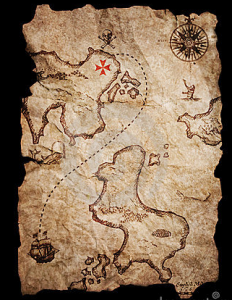By Eva and Alex 

Following yesterday’s Blog post on the AHRC – a success for BU, we would like to focus on the Faculty of Science and Technology’s success with AHRC. Over the last few years the Faculty of Science and Technology’s have a 45% success rate from 20 projects submitted with 9 funded.
So how did we achieve this success you ask? Well we took to the offices of Christchurch House to interview successful AHRC grant holders Dr. Mark Matlby and Dr. Emma Jenkins to find out…
Mark Maltby
What was your project about?
Cultural and Scientific Perceptions of Human-Chicken Interactions : It’s part of the Science in Culture Call. The project aims to unite scholars from different disciplines, members of the public, interest groups and schoolchildren through the study of human exploitation of chickens, an under-researched species that has the potential to provide new insights about the past, present and future of human society and their relationships with animals.
How is it going?
It began on January 6th – so early days!
What do you want to achieve?
One of the main aims is to get researchers from different disciplines to work together constructively and exchange knowledge and expertise in pursuit of a common research goal.
What gave you the edge, do you think?
Being positive/enthusiastic in statements in the application and in response to reviewers’ comments.. Working with colleagues from other institutions who have successfully gained and carried out research grants. Their expertise in writing the Case for Support, Objectives etc was invaluable.
In hindsight, what would you do differently, what advice would you give to others?
Despite our best efforts, we were tight to the deadline for application. What took more time than I expected was getting the cost estimates sorted. Particularly if you are applying with partners, allow enough time for members of other institutions to react.
Any other comments from your experience that are worth noting.
We certainly benefitted from having an interview rehearsal. Learn to write very concisely as word limits are challengingly limited.
Emma Jenkins
What was your project about
The project is concerned with developing a method to help us understand more about how Neolithic sites in southwest Asia (c 11,700-7800 cal BP) were used. This is an important period in human history which saw the advent of sedentism, agriculture, and ultimately the rise of complex societies. It is also, however, one of the most poorly understood. This is partly due to the problems associated with site recognition and partly because of the lack of preservation of many forms of evidence, particularly biological. As a result, many Neolithic sites are comprised of a series of structures, the function of which is difficult, if not impossible, to interpret. Therefore, it is critical that we maximise the information that can be acquired from these sites.
Our project uses recent advances in archaeological scientific techniques, namely phytolith (bodies of silica that form in and around plant cells)and geochemical analysis (traces of chemicals in soils resulting from human induced activities and waste, e.g. phosphorous, calcium and manganese) in a novel way. We will conduct a large scale combined analysis of phytoliths and geochemical elements from ethnographic sites to determine if certain activity areas, for example middens, hearths and floors, have particular phytolith and geochemical signatures that can help us recognise these same areas archaeologically.
How is it going
We have recruited two excellent new team members who will start with us in March and April and are busy making plans for our field season in April in Jordan. However, we have also hit problem number one but I am a firm believer in looking for solutions rather than focusing on the problem!
What do you want to achieve?
On the academic front I want to have a successful field season in Jordan, leading to the collection of a good range of samples which will enable us to produce worthwhile and valid results. The aim is to publish these as peer reviewed journal papers. The ultimate aim is for us to apply for further funding to pursue related research areas.
We also plan to produce two 10 minute documentaries. The first will show how scientific methods can be used in archaeology which I can use in my STEM Ambassador and general outreach work. The second is focused on documenting and presenting a sympathetic portrayal of traditional ways of life in Jordan and the relationship between people and a challenging but beautiful and ancient environment and landscape. The latter film is particularly pertinent because the traditional lifeways in Jordan are fast disappearing as a result of western influence.
What gave you the edge, do you think?
I think there were a number of factors which led to this project being funded. Perhaps the most important was the team of people. All of us had a proven track record in our discipline and a history of working in Jordan. Even though this was awarded to me as an Early Career Grant, my collaborators hold senior positions within their institutions and have a strong publication record relating to the project research areas. We had done pilot studies involving phytoliths and geochemical analysis on ethnographic sites in Jordan which demonstrated that the method had potential. Another strength was the fact that I had run (or co-run) projects in Jordan previously so could demonstrate project management skills. Last, but definitely not least, I think Martin Pickard from Grantcraft helped a lot in the layout and design of the proposal which improved it enormously.
In hindsight, what would you do differently, what advice would you give to others?
I over thought the impact part of the project (the documentaries) and originally made them too specific and complicated. We have since changed their focus and this makes them much more in line with the academic aims.
As for my advice-don’t have two babies while trying to write a grant application in a timely fashion!
No seriously,
- Spend a lot of time thinking about the project and don’t under estimate how much time the project planning can take.
- Cover yourself for every possible criticism. I wrote in a contingency plan in case there were any political problems in Jordan that made fieldwork unfeasible. The reviewers all seemed to like the fact that I had addressed this potential problem.
- Make sure your project is good value for money and that you have a good team of people
- Ask for help . I asked a lot of people within my discipline for advice and to read my application. One of my colleagues noticed a rather fundamental flaw in my proposal in its early stages and suggested alternative archaeological sites which made the project much more coherent.
Also any other comments from your experience that are worth noting.
Designing the project was a really worthwhile experience and led to me finding fantastic team members whom I hope to work with in the future.
~Don’t miss tomorrow’s edition, when we hit the streets of Weymouth house for the Media School story on their fantastic success with the AHRC.






 This week is
This week is 












 3C Event: Research Culture, Community & Cookies – Tuesday 13 January 10-11am
3C Event: Research Culture, Community & Cookies – Tuesday 13 January 10-11am Dr. Chloe Casey on Sky News
Dr. Chloe Casey on Sky News Final Bournemouth University publication of 2025
Final Bournemouth University publication of 2025 On Christmas Day in the Morning…
On Christmas Day in the Morning… New Nepal scoping review on maternal & neonatal health
New Nepal scoping review on maternal & neonatal health ECR Funding Open Call: Research Culture & Community Grant – Application Deadline Friday 12 December
ECR Funding Open Call: Research Culture & Community Grant – Application Deadline Friday 12 December MSCA Postdoctoral Fellowships 2025 Call
MSCA Postdoctoral Fellowships 2025 Call ERC Advanced Grant 2025 Webinar
ERC Advanced Grant 2025 Webinar Horizon Europe Work Programme 2025 Published
Horizon Europe Work Programme 2025 Published Update on UKRO services
Update on UKRO services European research project exploring use of ‘virtual twins’ to better manage metabolic associated fatty liver disease
European research project exploring use of ‘virtual twins’ to better manage metabolic associated fatty liver disease